The sight of hundreds of blackbirds congregating in the sky or perched together on trees has captivated the human imagination for centuries. This phenomenon, often termed a “murmuration” or a “gathering,” evokes a mix of awe and curiosity.
The synchronized movements of these birds create mesmerizing patterns that seem to defy the boundaries of individuality.
People have wondered about the purpose behind such gatherings and the intricate communication that must be taking place among these avian flocks.
The behavior of these black birds has sparked scientific inquiry, artistic inspiration, and even cultural interpretations.
Understanding what does it mean when hundreds of black birds gather involves unraveling the intricate threads of social dynamics, navigation strategies, and ecological influences that drive this awe-inspiring display.
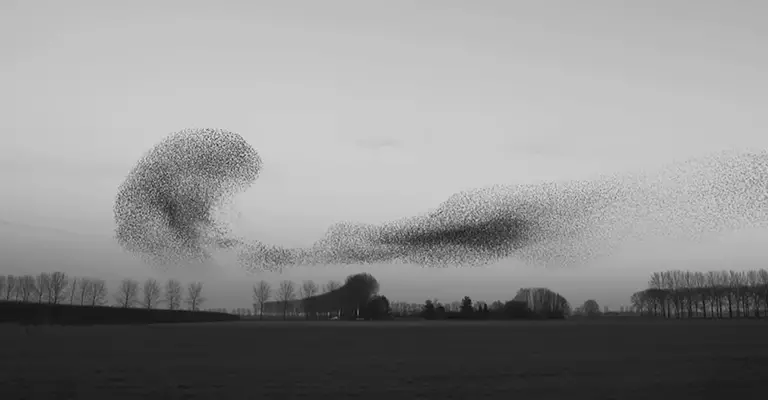
What Does It Mean When Hundreds Of Blackbirds Gather?
Hundreds of blackbirds gathering is a fascinating sight that can have different meanings depending on the context.
Here are some reasons why blackbirds gather in large numbers:
Migration
One of the most common reasons why black birds gather is to migrate to warmer or more abundant areas during the winter or spring.
Migration can help them avoid harsh weather, find more food, or breed more successfully. Blackbirds may form large flocks to travel together and benefit from the aerodynamics, navigation, and safety of the group.
Foraging
Another reason why black birds gather is to forage for food, especially in areas where resources are scarce or unpredictable.
Foraging in flocks can help them locate and exploit food sources more efficiently, share information and learn from each other, and reduce the risk of predation.
Roosting
Roosting is the behavior of resting or sleeping in a specific location, usually at night or during bad weather.
Blackbirds may gather in large numbers to roost in trees, buildings, or other structures that provide shelter, warmth, and protection from predators.
Roosting in flocks can also help them conserve energy, communicate, and socialize.
Predator Avoidance
Predator avoidance is the behavior of avoiding or escaping from potential threats or enemies.
Blackbirds may gather in large numbers to deter or confuse predators, such as hawks, owls, or cats.
Flocking can help them increase their vigilance, warn each other of danger, and perform evasive maneuvers.
Mating
Mating is the behavior of finding and attracting a suitable partner for reproduction. Blackbirds may gather in large numbers to display their physical or vocal traits, compete with rivals, or choose mates.
Flocking can help them increase their visibility, assess their options, and ensure genetic diversity.
Territoriality
Territoriality is the behavior of defending a specific area or resource from intruders or competitors.
Blackbirds may gather in large numbers to establish or maintain their territories, especially during the breeding season. Flocking can help them signal their strength, deter challengers, and cooperate with allies.
Sociality
Sociality is the behavior of interacting and forming relationships with other individuals of the same species.
Blackbirds may gather in large numbers to socialize and bond with each other, especially outside the breeding season.
Flocking can help them exchange information, learn from each other, and cooperate for mutual benefit.
Curiosity
Curiosity is the behavior of exploring and investigating novel or interesting stimuli or situations.
Blackbirds may gather in large numbers to satisfy their curiosity and learn more about their environment, such as human activities, objects, or events. Flocking can help them increase their knowledge, adaptability, and innovation.
Fun
Fun is the behavior of engaging in enjoyable or playful activities for no apparent reason.
Blackbirds may gather in large numbers to have fun and express their emotions, such as joy, excitement, or boredom. Flocking can help them enhance their mood, creativity, and well-being.
These are some of the possible meanings behind hundreds of blackbirds gathering.
What are some examples of blackbirds?
Some examples of blackbirds are:
American Crow
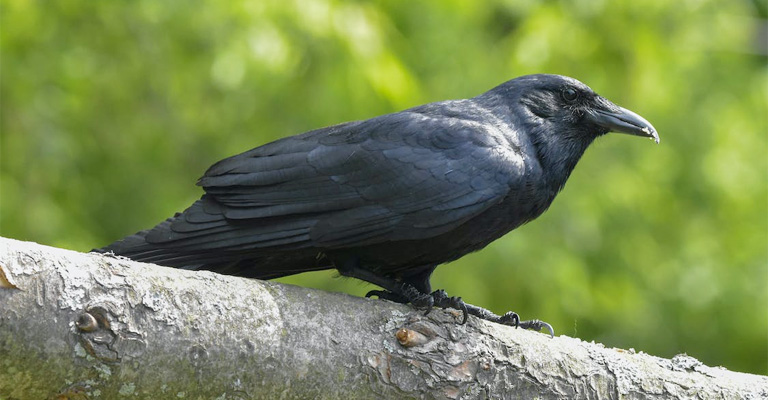
A large and intelligent bird that is found throughout most of North America. It has a black body, a yellow eye ring, and a yellow bill.
It is omnivorous and adaptable to human environments. It has a loud and varied call that can sometimes mimic other sounds.
European Starling
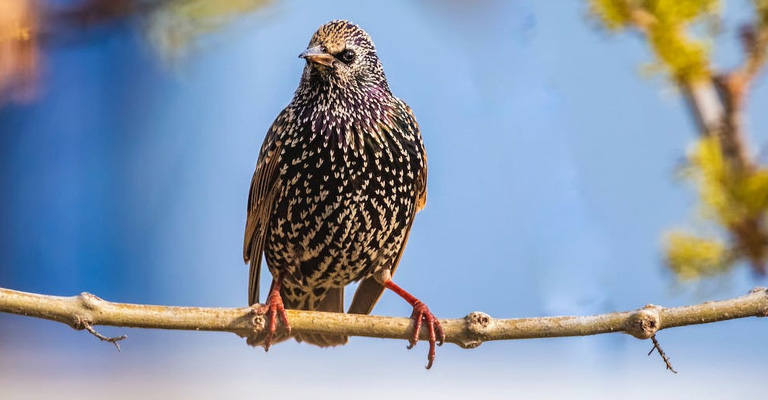
A medium-sized bird that was introduced to North America from Europe in the late 1800s. It has a black body with iridescent green and purple hues and white spots on the wings and breast.
It is omnivorous and often forms large flocks. It has a complex and musical song that can imitate other birds or noises.
Common Raven
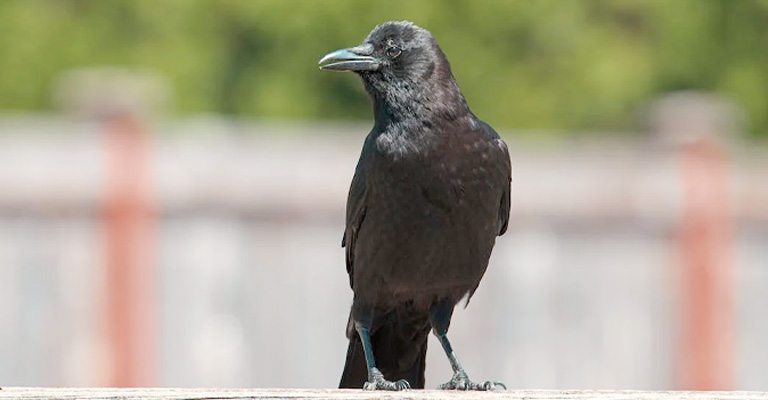
A very large and intelligent bird that is native to Mexico, the western United States, and most of Canada.
It has a black body, a thick black bill, and a wedge-shaped tail. It is omnivorous and can use tools to obtain food or water. It has a deep and raspy voice that can produce various sounds.
Brown-Headed Cowbird
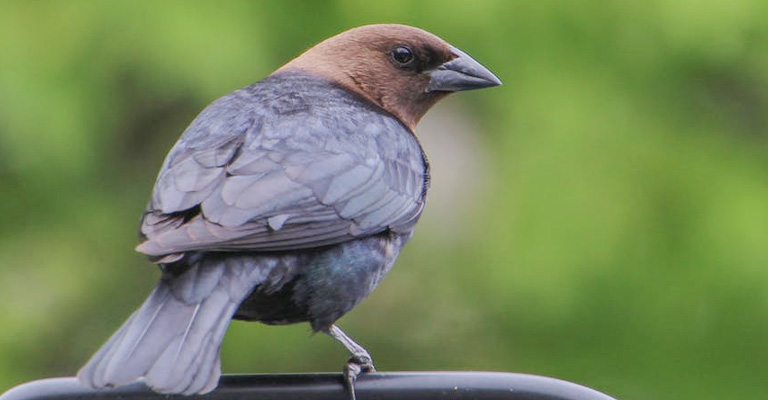
A small bird that is native to North America. It has a black body and a brown head in males and a brown body with streaks on the breast in females.
It is a brood parasite, meaning it lays its eggs in the nests of other birds and lets them raise its young. It feeds mainly on seeds and insects.
Common Blackbird
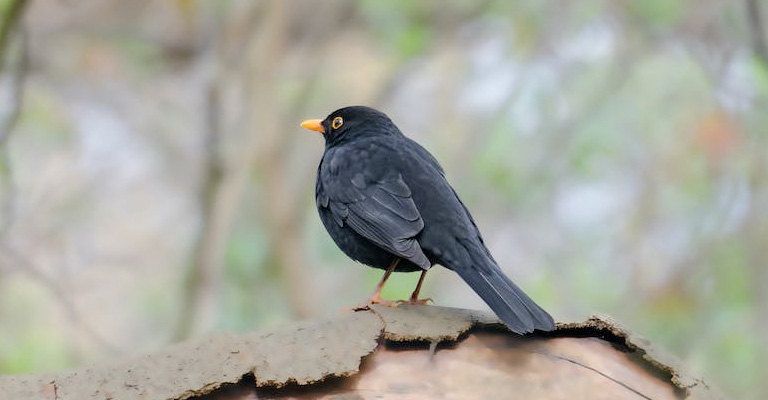
A medium-sized bird that is native to Europe, Asia, and North Africa and has been introduced to Australia and New Zealand.
It has a black body, a yellow eye ring, and a yellow bill in males and a brown body with spots on the breast in females. It is omnivorous and has a rich and melodious song.
These are just some of the many types of blackbirds that exist in the world.
How To Attract And Keep Blackbirds In Your Yard?
Blackbirds are a diverse group of birds that include grackles, starlings, cowbirds, red-winged blackbirds, and common blackbirds.
They are often seen in large flocks, especially during migration or winter. Some people may find them annoying or noisy, but others may appreciate their intelligence and beauty.
If you are one of the latter, you may want to attract and keep blackbirds in your yard. Here are some effective ways to do that:
Plant A Garden To Attract Blackbirds
Fruiting plants such as blackberries, raspberries, strawberries, bittersweet grapes, cherries, plums, and roses (rose hips) provide a good source of calories and other nutrients for blackbirds.
Vegetable plants such as sunflowers, corn, tomatoes, melons, and peas will be appreciated as well. Plant a garden that produces throughout the year for best results.
Provide Clean Water For Drinking And Bathing
Blackbirds need water to stay hydrated and healthy. They also enjoy splashing and preening in shallow pools or birdbaths.
Make sure the water is fresh and clean, and change it regularly to prevent algae or bacteria growth. You can also add a fountain or a dripper to create movement and sound that will attract blackbirds.
Create The Desired Habitat
Blackbirds like to have a high vantage point from which to watch for predators, trespassers, and potential mates.
They also like to nest in shrubs, grasses, and trees, so provide all of these for happier birds. You can also add birdhouses or nest boxes that are suitable for the size and shape of the blackbirds you want to attract.
Do Not Allow Hunting Or Disturbance
Blackbirds learn quickly to avoid humans when they have been shot at or have had their nesting sites disturbed. They may also become wary of domestic animals like cats and dogs that may prey on them or their eggs.
To protect blackbirds and make them feel safe in your yard, keep your pets indoors or supervised, and report any illegal hunting or poaching activities.
Provide Habitat For Blackbird
Blackbirds are omnivorous birds and will eat a wide range of food, including insects, worms, berries, and fruit.
You can provide a food source for blackbirds by planting fruit trees and bushes or putting out bird feeders. You can also attract earthworms by keeping a pile of rotting organic compost for the birds to dig in.
Tie Helium-Filled Balloons
This is a good perimeter defense against unwanted blackbirds. Shiny mylar balloons tend to work best because blackbirds are put off by reflective surfaces. Tie them to the corners of a fence or even the top of your bird feeder to keep blackbirds away.
Play Recordings Of Blackbird Alarm Calls
Blackbirds communicate with each other using various sounds and calls. One of them is the alarm call, which warns other birds of danger or threat.
You can use this to your advantage by playing recordings of blackbird alarm calls near their roosting sites. This will make them feel uneasy and scared, and they may decide to leave your yard.
Use Bird Spikes Or Netting
Choose to roost on your roof, chimney, eaves, or gutters if they find them comfortable and safe. However, this can cause damage to your property and create noise and mess.
To prevent this, you can install bird spikes or netting on these areas to make them inaccessible or unappealing for blackbirds.
These are some of the ways you can attract and keep blackbirds in your yard.
FAQ
Birds, like starlings, gather in huge flocks as a survival strategy against predators. This “murmuration” confuses and overwhelms predators, making it difficult for them to target individual birds.
Factors like the availability of food and roosting sites influence the formation of large bird flocks. Birds congregate to access abundant food sources and share information about suitable places to rest.
Birds rely on visual cues and simple rules of alignment and separation to coordinate their movements. Each bird follows its neighbors, creating the mesmerizing synchronized patterns we observe.
While some bird gatherings are associated with migration and breeding, others occur throughout the year. Migratory gatherings can help birds find the best routes and rest stops, while non-breeding gatherings provide safety and foraging benefits.
In various cultures, large bird gatherings have been interpreted as omens, messages from the spiritual realm, or signs of nature’s interconnectedness. They’ve also inspired art and literature, showcasing the profound impact of these awe-inspiring displays on human imagination.
Conclusion
The enigmatic gatherings of hundreds of blackbirds stand as a remarkable example of nature’s intricate symphony.
The phenomenon, a testament to the beauty of collective behavior, reflects both the adaptability of these birds and the complex interconnectedness of ecosystems.
Whether driven by survival strategies, communication cues, or a combination of factors, these gatherings serve as a reminder of the mysteries that still permeate our understanding of the natural world.
As science continues to shed light on the intricacies of these avian gatherings, one thing remains certain: the breathtaking sight of hundreds of blackbirds weaving their dance across the sky will continue to inspire awe and wonder in the hearts of those fortunate enough to witness this captivating spectacle.